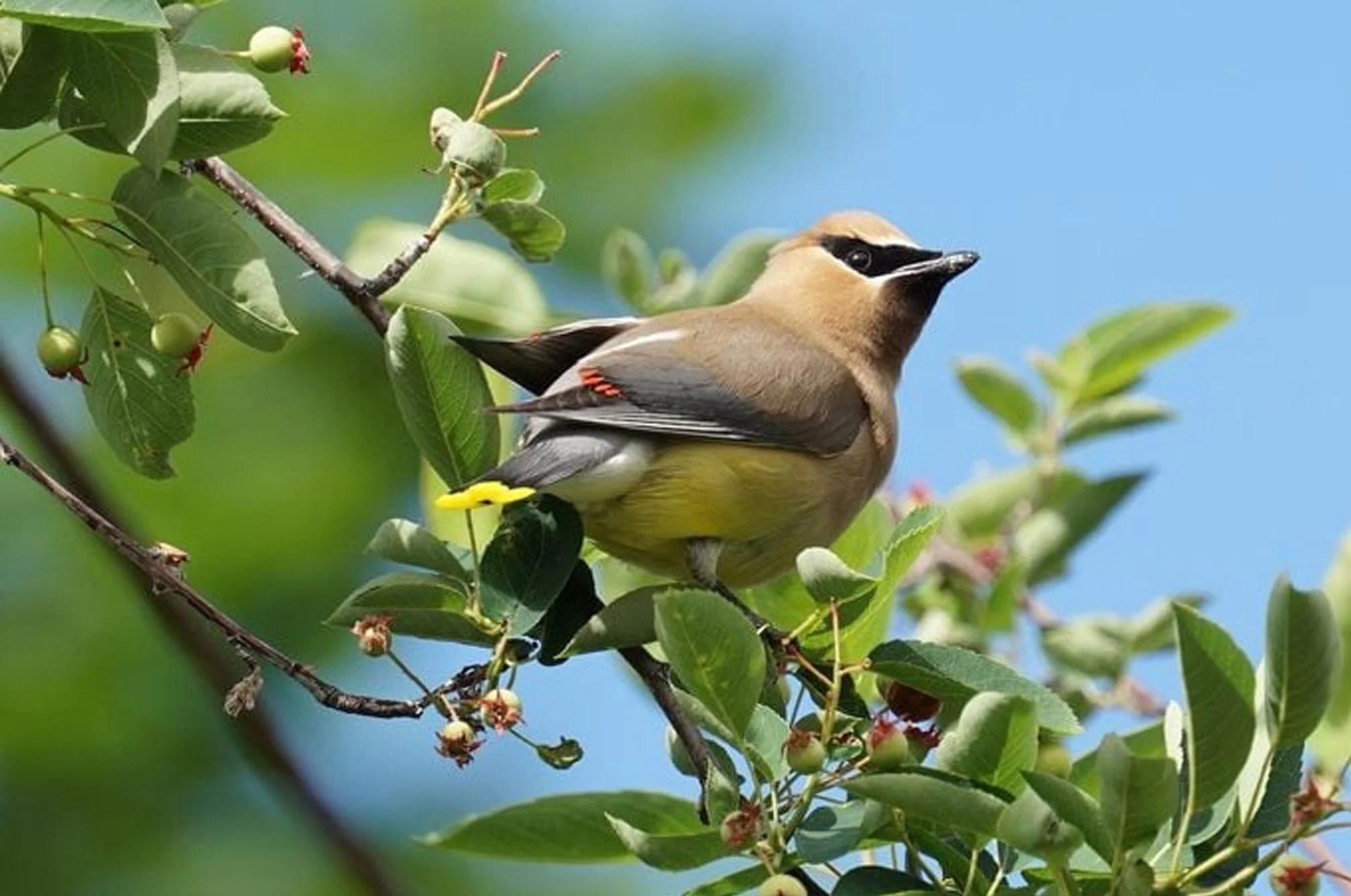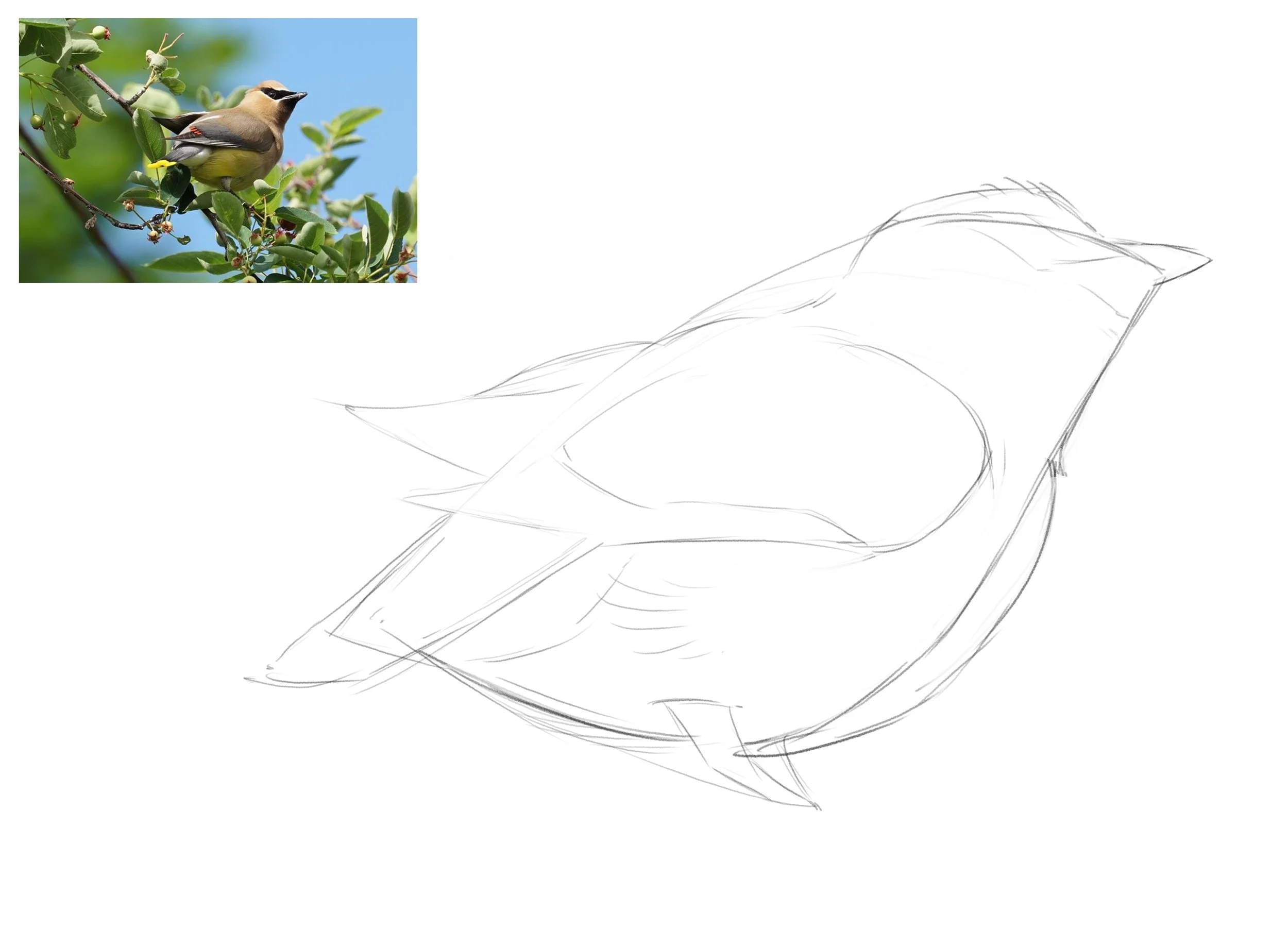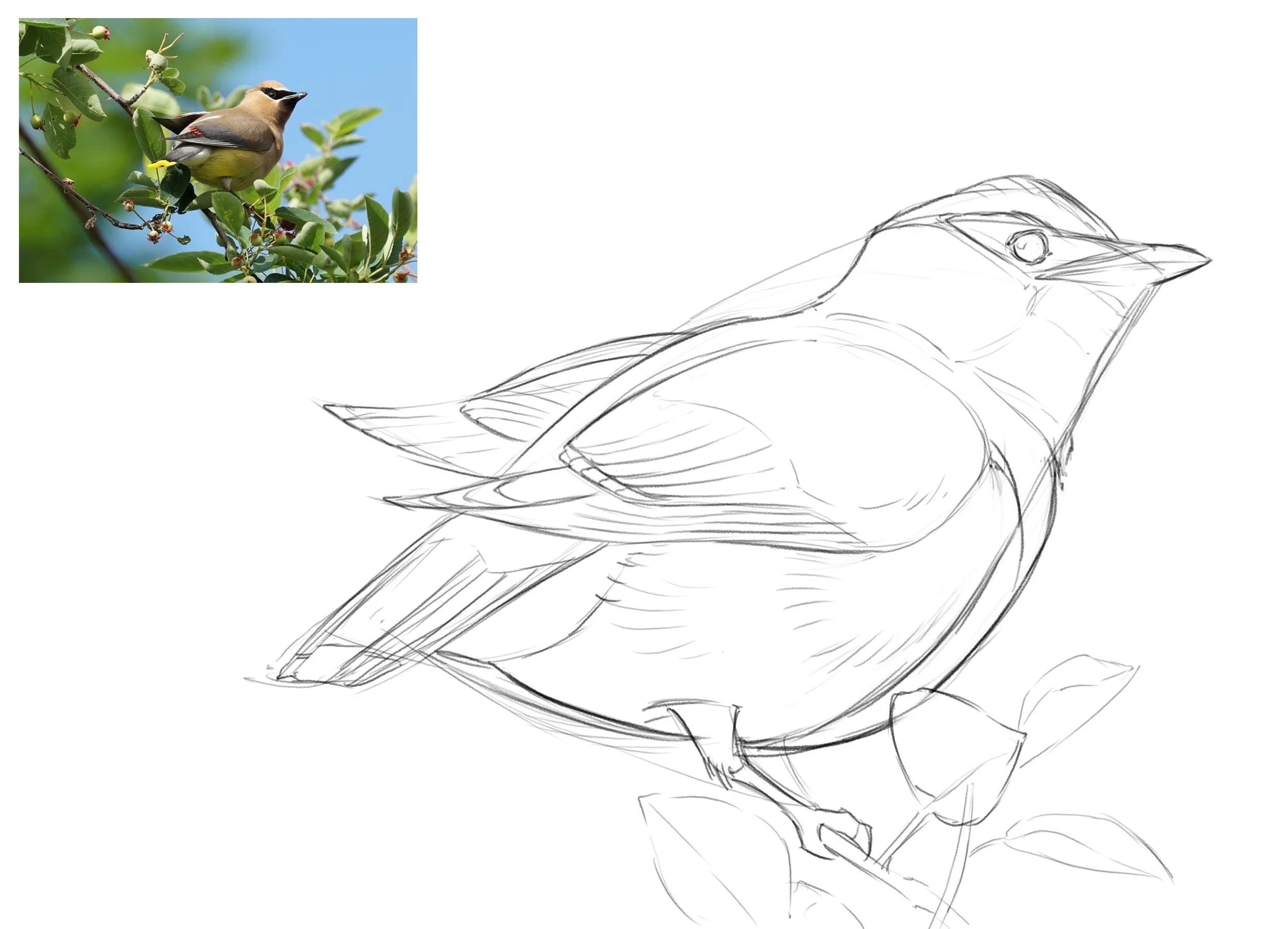Drawing Tips - Critter Studies
I've been studying drawing animals for a significant amount of time, and I've honed in on a method that helps with simplifying the forms as well as proportion. Proportion is, I find, one of the most difficult hurdles to overcome when first learning to draw.
I've developed a method that gives on a general start before drawing on a page, which can feel infinite in a way when it's empty. It involves beginning with a general shape which your drawing will be contained in, breaking that shape up into several sections, and going from there. Here's the reference image I'm using for this exercise of a bird called the cedar waxwing (Full credit to the photographer, Pearl Bouchard):
Now on to the first step: I create a shape that gets down the overall shape of the entire critter first. I call this a gesture-shape, as opposed to a gesture-line often used in drawing. Heck, you can do both if you like. Onto the next step!
In this next step, I've taken the shape and blocked out sections of it to help guide the drawing process in regards to proportion. Without this step, I tend to find it a lot more difficult to keep the sections of the drawing in correct proportion to one another. Additionally, don’t worry about drawing outside of your gesture shape — I consider it a starting point to go from, and as you draw, if you see that you need to draw outside of it, just go for it.
From here, I can block out the main shapes of the critter, using 2D shapes to start. I've found this is a great skill to practice, as you can approach the drawing from a basic shape-centric, graphic standpoint first, then move to 3D from there. I'll turn these shapes into 3D forms in the next step.
Adding cross-contour lines (in this case, I mainly stuck to the ones you can see in the photo) gives the shapes a 3D form to build from. Once this is done, you can add additional shapes of the feathers from here.
There you have it, a critter study! From here, you can add ink lines on top if you’d like to go that route. Additionally, you can design your own version of this critter (perhaps you’d like to give it a plume, a differently-shaped beak, or add an elemental effect to it!) or something else like it. I hope this approach makes it easier to draw from reference. Thank you for reading, and happy drawing!




